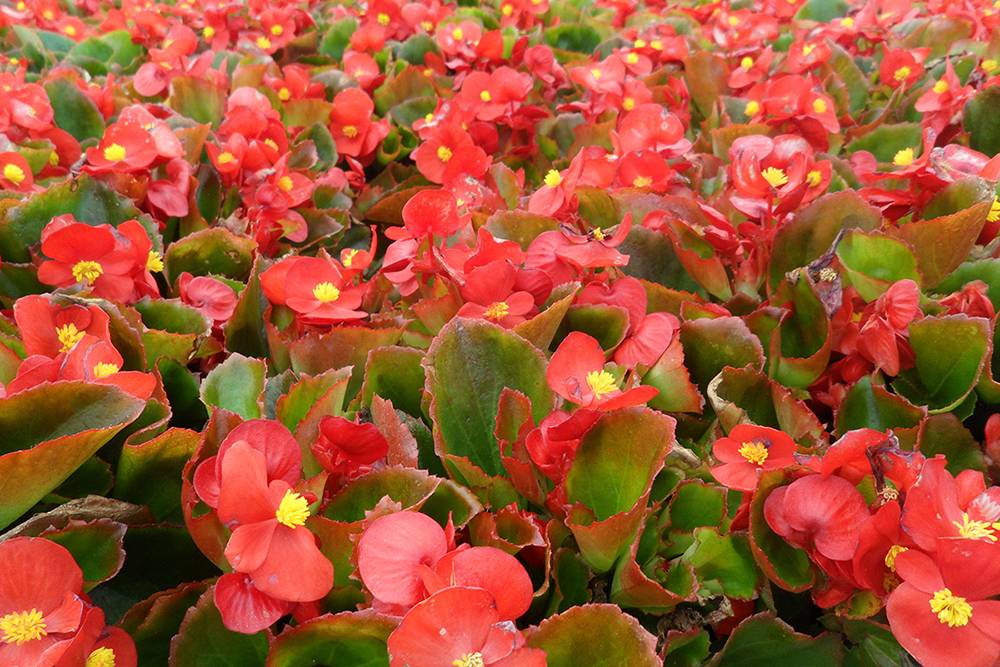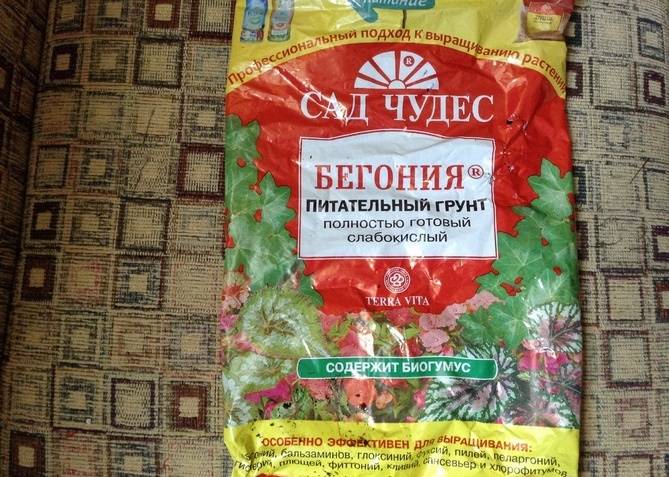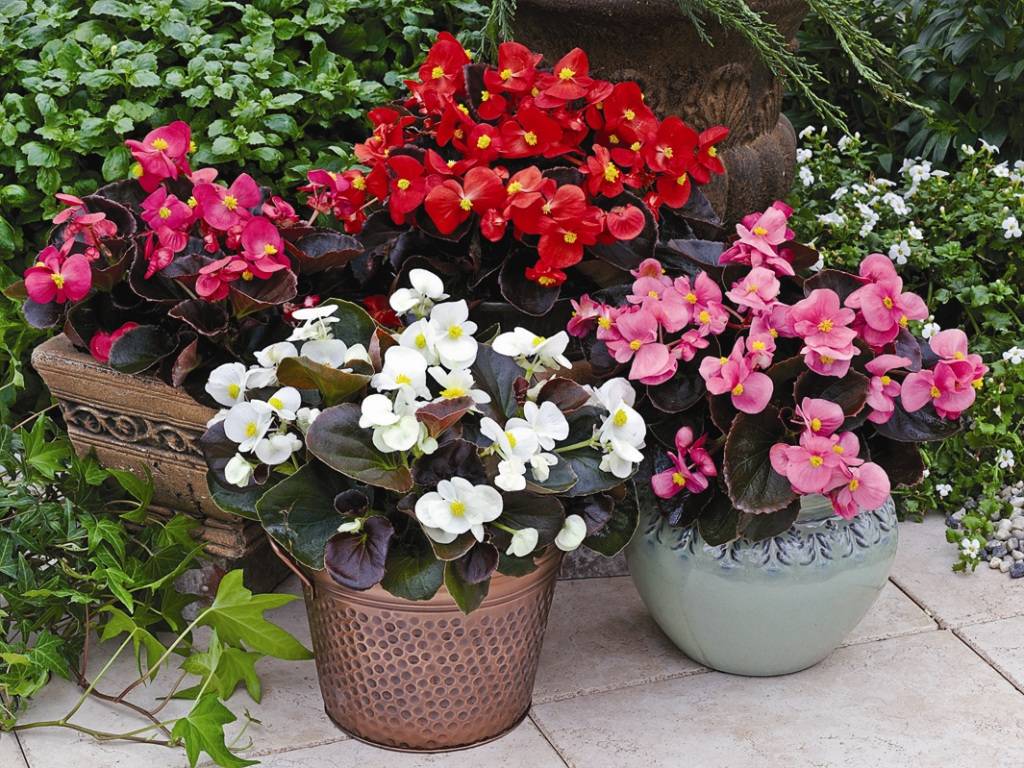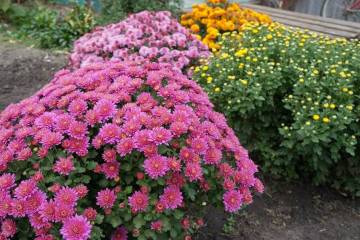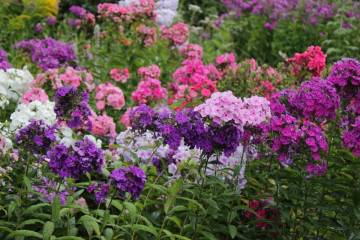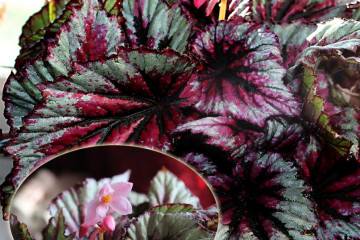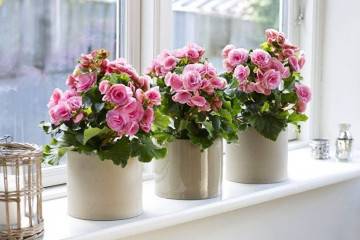What soil is needed for Begonia - selection and preparation
Content:
Begonia (Begonia) is a noble ornamental plant. Grown in flower beds and at home. Caring for flowers is simple, and the only "whim" of the plant is the soil. Therefore, the soil for begonias is chosen carefully.
What soil does begonia prefer
The roots of the plant are thin, delicate, grow in breadth. They are located just below the surface of the earth. They are injured when a flower is inadvertently weeded or transplanted.
The soil for room begonias is chosen light, loose, slightly acidic (pH - 5.5-6.5). The vulnerable root system rots from excess moisture. Therefore, the soil is chosen rich in nutrients, which is easily permeable to moisture and air.
Potting mix base:
- leafy and sod land;
- low-rise and high-moor peat;
- sand.
Perlite, vermiculite, river sand give looseness to the substrate.
For the permeability of water and air, coconut fiber, sphagnum moss are used.
They regulate acidity with humus, peat, lime.
For specific purposes, the composition of the soils is changed:
- germinate tubers - sphagnum moss, leafy earth, perlite in a ratio of 2: 2: 1;
- strengthen the cuttings - river sand, peat (one to one);
- grow up royal begonia - sod and leafy land, peat, humus (ratio 1: 2: 2: 2);
- for young shoots, soil and peat are mixed one to one;
- for mature crops, the substrate is made up of soil, peat and sand;
- for ever-flowering begonias, leafy soil, peat, sand and humus are mixed in a ratio of 2: 1: 1: 1.
What soils exist
Purchased land for begonias makes it easier for the grower - you do not have to choose the compositions yourself.
They choose the products of the following companies:
- "Garden of Miracles". Contains: peat, river sand, agroperlite. Nutrient additives: vermicompost, mineral fertilizers. Sold in packs of 2.5 liters. This is the kind of soil that begonia loves.
- "The world of soils". The substrate contains: high and low peat, chalk, dolomite flour, sand, vermiculite. Also complex fertilizer "Sapropel". It contains organic additives, sawdust, river sand.
- "Vermion". Basis: peat, gravel, vermicompost. The bags contain 2 liters of soil.
- "Mother earth is black earth". Offers a versatile formula for berries, garden crops and indoor flowers.
Preparing the soil constituents for begonias
Florists-enthusiasts, choosing which land to plant begonias, will give preference to compositions of their own preparation. This gives them confidence in the quality of the components and saves money.
Risks:
- forest land contains worms and infections - sources of flower diseases;
- in the accumulated many weeds and their seeds.
Prepare components for planting begonias as follows:
- Leafy ground is found in the forest or under a tree. It should not be oak or willow, because their foliage contains tannins, and they destroy begonias. Choose a sunny area under the tree, remove the top layer with last year's rotted leaves. The exposed layer is collected in containers.
- Sod land is taken in meadows, which are far from highways and industrial facilities. This is a "mole" land. Ideally harvested directly from mole piles. Or they choose a bright place, remove the top layer of earth by 10-15 cm, gain soil.
- Compost or humus is picked up. Or replace them with garden soil. Do not lose sight of the fact that humus not only enriches the soil with nutrients, but also increases the acidity of the soil.
- The collected components are mixed.
The main mistakes when preparing the land
Begonias do not forgive the miscalculations that flower growers make when preparing the soil for planting:
- the land is harvested in the wrong place (in an industrial zone, under an oak tree);
- do not respect the proportion;
- do not disinfect the soil.
Disinfection of the earth
The collected soil for begonia contains pathogenic bacteria, microorganisms. They poison the substrate with the products of their vital activity. Bugs and worms undermine the weak roots of the plant. Therefore, the mixture is sterilized before use in several ways:
- Calcined in the oven. Pour the earth on a baking sheet in a layer of 5 cm, put it in a preheated oven.
- Freeze in the freezer. The earth is wrapped in cloth, placed in a freezer, kept for 4-5 days. Then keep warm for a week. At this time, the eggs of the worms awaken. The ground is frozen again - the pests are killed by 100%.
- Warm up in the microwave.
- Spill with boiling water.
- Arrange a water bath. A container with water is placed on the fire, a grate is placed above it. Pour the prepared material, hold it over the steam for an hour and a half.
The sterilized soil is cooled - it is ready for use.
At the bottom of the pot, drainage is poured with a layer of 3 cm. This is expanded clay, medium-sized river pebbles. The measure prevents stagnation of water in the container, allows the roots to breathe.
Planting begonias
When a begonia is transplanted, they take into account not only what kind of soil is needed for home begonia, but also the type of root system:
- Tuberous. In the lower part of the root, spherical or flat-round tubers grow.
- Rhizome. The culture forms fleshy horizontal roots. They are covered with small roots.
- An extensive system.
Planting tubers in a pot
Pick up a pot. It is taken into account that the root system is located below the soil surface. Take a container whose width is greater than the height.
Purchase a tuber at a flower shop. Pay attention to the appearance: the size is not less than 3 cm in diameter, dense. Overdried planting material with damage is not taken.
Determine the top and bottom of the tuber. The kidneys are visible on the top. These are the growth points of the flower. The tuber resembles a calyx: the top is concave, the bottom is convex.
Large tubers are divided with a knife, making sure that there are 3-4 buds on each part. They are cleaned of dried elements, treated with a fungicide or weak potassium permanganate.
The flowerpot is filled with drainage. The substrate is poured, the tuber is placed in the recess, buds up. The soil is covered so that the kidneys remain open. Water, cover with a bag. When they sprout, you need to open the sprouts for air hardening.
When they reach 3-4 cm, the earth is poured into the flowerpot. The procedure is carried out in February-March.
Begonia is transplanted annually. The size of the container is increased.
Landing in open ground
In open ground, the culture should be planted in May-June. The soil in the flower garden should warm up well, be suitable for the culture in composition.
The tubers are germinated. Seedlings are placed 30-40 cm apart.
The place for landing is chosen shaded. This applies to both balcony flowers and garden flowers. In the sun, in direct light, the fleshy leaves of the plant get burned. Conifers are planted in the company with begonias.
On the balconies, begonias, especially cascading varieties, are protected from the sun and wind. The succulent branches are fragile and cannot withstand the gusts of wind.
What to do with the old land
For a year, while begonia grows in a pot before being transplanted into a new container, the soil in it is depleted. When the plant is transplanted, the soil is shaken off to check the condition of the roots.
The old soil is harvested, for looseness it is added to the new one. It will allow air to penetrate more easily to the roots.
The spent substrate is poured into a compost pit or garden beds.
Begonia is a beautiful indoor and garden plant. There are thousands of hybrid varieties. It is not difficult to grow, multiply, take care of. The only condition is the correct soil. Buy in stores, or cook it yourself. Main components: leaf and sod land, peat, sand.
Video
